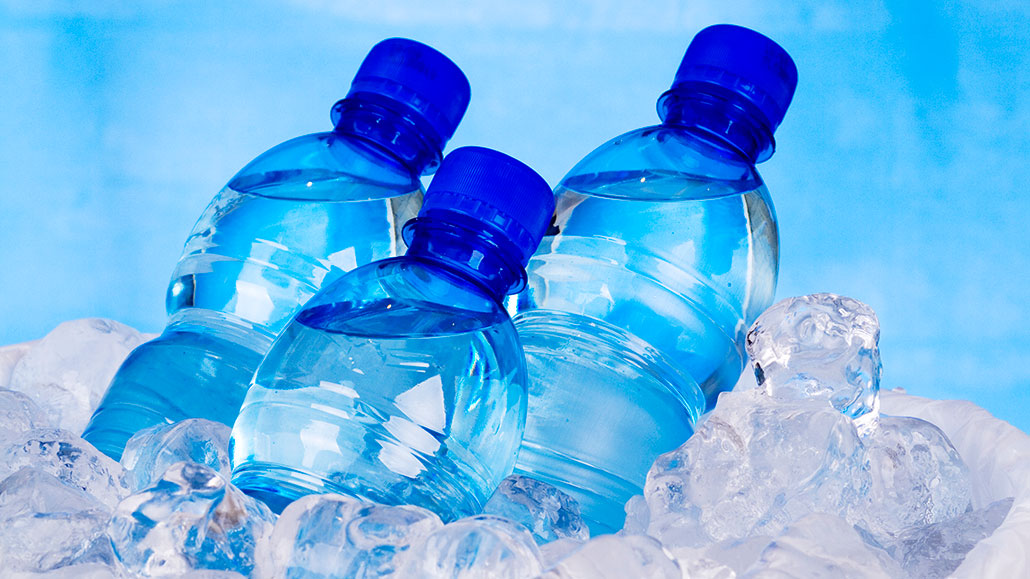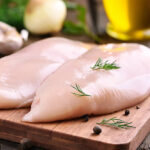In our everyday lives, the significance of staying hydrated cannot be overstressed, and water bottles have become our steadfast companions in this endeavor. Whether we’re at the gym, in the office, or traversing the great outdoors, the question of “how many ounces is in a bottle of water?” is more than just a matter of curiosity—it’s essential knowledge for ensuring we meet our daily hydration needs. This article delves into the various sizes of water bottles available in the market, from the compact and convenient to the voluminous and versatile, offering a comprehensive understanding of water bottle capacities. By exploring the reasons behind the different sizes and their practical implications for daily hydration, we aim to equip you with the knowledge to make informed decisions about your water intake. Join us as we unravel the mystery of water bottle ounces, demonstrating the importance of this seemingly simple question in promoting a healthy, hydrated lifestyle. As we navigate through the specifics, we invite you to quench not only your thirst but also your curiosity, unlocking the secrets to optimal hydration and well-being.
The Basics of Water Bottle Sizes
To determine how a water bottle can meet your hydration needs, you first need to understand the different sizes available. This section will break down common water bottle capacities.
Understanding Common Water Bottle Sizes
Water bottles come in a range of sizes suitable for different purposes. Here are some of the most popular standard sizes:
- 12 oz – Slim and portable, great for tossing in your bag to sip throughout the day
- 20 oz – The average consumer size, provides a couple servings of water
- 32 oz – Ideal for staying hydrated during exercise or outdoor activities
- 64 oz – Useful for minimizing refills when you need to drink a high volume of water
The Standard Water Bottle Size Explained
The 20 oz water bottle is considered the standard size. It typically contains about 2.5 servings of water – each serving being about 8 oz or one cup. This capacity allows you to take in adequate water over a few hours between refills. The standard size strikes a balance between portability and quenching your thirst.
Measuring Your Water Bottle
To determine the capacity of your water bottle, follow these simple steps:
- Empty the bottle completely.
- Fill the bottle to the very top with water.
- Pour the water into a measuring cup to determine the total volume.
This will tell you how many ounces your water bottle holds. Repeat this process if the bottle has markings for different capacities.
Beyond the Standard: Other Water Bottle Sizes
While 20 oz is the norm, there are many other sizes to suit specific needs:
- Kids bottles tend to be 6-12 oz for little hands.
- Sports bottles range from 25-40 oz to support high exertion.
- Jugs hold 1/2 gallon (64 oz) or a full gallon (128 oz) for all day hydration.
Consider your personal habits and needs when selecting a water bottle size. We’ll go over guidelines for intake next.
Hydration Science and Health

Now that you understand water bottle capacities, let’s explore why proper hydration matters for your health.
The Impact of Drinking 4 Liters of Water Daily
Drinking 4 liters (about one gallon) of water every day delivers tremendous health perks including:
- Increased energy and productivity – Water boosts circulation, alertness, and cognitive function.
- Reduced risk of chronic diseases – Staying hydrated can protect against conditions like heart disease.
- Weight management – Water increases metabolism and reduces overeating.
- Healthier skin – Hydration keeps skin elastic and supple, reducing wrinkles.
- Improved mood – Even mild dehydration causes irritability and reduced concentration.
Hydration Needs Across Life Stages
Hydration requirements vary across life stages based on factors like activity levels and metabolism:
- Children need about 6 cups (48 oz) including water and other beverages.
- Women need 9 cups (72 oz), increasing to 10 cups (80 oz) during pregnancy or lactation.
- Men need 12.5 cups (100 oz).
- Elderly may need less due to slower metabolisms – about 8 cups (64 oz) is adequate.
The Role of Water in Skin Health
Beyond overall wellness, water specifically benefits skin:
- Skin elasticity depends on adequate hydration to maintain suppleness.
- Water flushes toxins from cells and reduces inflammation like acne.
- Drinking more water can minimize wrinkles.
- Severe dehydration leads to dry, flaky, irritated skin.
For healthy glowing skin, be sure to meet your daily water needs.
Recognizing and Preventing Water Intoxication
See more : How Long To Cook Riblets In Oven At 400? Find Out Now
While proper hydration is vital, it is possible to overdo it. Water intoxication occurs when overhydration causes an electrolyte imbalance. Key symptoms include:
- Headache
- Nausea
- Muscle cramps
- Disorientation
- Seizures in extreme cases
To avoid water intoxication:
- Space out intake over the day rather than chugging water rapidly.
- Include electrolytes from food and beverages like coconut water.
- Assess needs based on climate and activity level.
- Stop drinking extra water if you feel any symptoms.
Moderation is key to staying safely hydrated. Let your body’s cues guide Practical Hydration Guidance
Now that we’ve covered the science behind hydration, let’s get practical. Here are tips for meeting your unique needs:
Daily Water Intake Recommendations
A standard water bottle typically contains 16.9 fluid ounces. This size is commonly found in large cases of bottled water and is equivalent to about 4 bottles per day per person. As a general guide, aim for this much total water from food and beverages daily:
- Women: 9 cups (72 oz)
- Men: 12.5 cups (100 oz)
Adjust as needed based on activity, climate, health conditions, etc. Don’t force excess water if your body isn’t thirsty.
Seasonal Adjustments to Hydration
Your needs fluctuate based on weather:
- In hot summer months, increase intake by 8-16 oz.
- In dry winter months, increase by 8 oz to offset drier air.
- In humid climates, decrease by 8 oz since less water evaporates.
Listen to your body’s cues and sip steadily throughout the day.
Hydration and Your Diet
Food contributes about 20% of your fluid intake. Fruits and veggies especially hydrate:
- Tomatoes
- Cucumbers
- Celery
- Watermelon
- Strawberries
Herbal tea, milk, and juices also count towards your daily total.
Environmental and Global Perspectives
Beyond health impacts, hydration choices affect the planet. Let’s explore water usage from environmental and global views.
Choosing Eco-Friendly Water Bottles
Reduce plastic waste by selecting sustainable materials:
- Reusable bottles – stainless steel, glass
- BPA-free plastic – for disposable bottles
- Plant-based – from renewable materials like bamboo
Also look for bottles with recycled content.
Global Water Practices and Accessibility
Water practices, attitudes, and access vary greatly worldwide:
- In Europe, carbonated water is preferred by many.
- In India, drinking water with meals is discouraged – water is consumed before and after.
- Approximately 2.2 billion people lack safe drinking water access.
See more : How much aluminum per pound? Learn the price of aluminum
Understanding global perspectives cultivates appreciation for accessible hydration.
Contributing to Sustainable Water Use
You can help conserve global water supplies by:
- Reducing your water footprint – the amount used to produce your food and other goods.
- Cutting food waste – agriculture accounts for 70% of water usage.
- Supporting sustainability initiatives through donations and political engagement.
- Making home upgrades like low-flow toilets to reduce household water waste.
Every mindful choice keeps more water in the ecosystem.
Enhancing Your Hydration Experience

Innovations in technology are elevating drinking water with features like tracking and portability. Let’s explore the latest trends.
Innovations in Water Bottles
Smart water bottles allow you to monitor intake and get reminders. Features include:
- Apps that track your ounces consumed
- Usage logs to identify trends
- Alerts when it’s time to drink more
- Bluetooth connectivity to sync data
- Leak-proof lids for on-the-go sipping
Choose a bottle aligned with your tech comfort level. Start simple or go high-tech.
Hydration Gear for the Great Outdoors
Specialty gear like hydration packs keeps you fueled during activities:
| Gear | Description |
| Camelbak | Backpack with built-in water bladder and drinking tube |
| Water clips | Attach bottles to bikes, belts, etc. |
| Running belts | Slim waist pouches for phones and bottles |
| Insulated bottles | Maintain temperature during outdoor adventures |
Match your gear setup to your favorite activities and sports.
Maintaining Your Water Bottle
Keep bottles fresh and bacteria-free with proper care:
- Hand wash with mild soap and water after each use.
- Replace bottles every 3-6 months as plastic breaks down over time.
- Clean with brush and baking soda solution to remove grime.
- Avoid dishwasher – high heat can damage many bottles.
Make bottle maintenance part of your routine for optimal hydration.
Supporting Your Hydration Journey
Ready to establish healthy hydration habits? Here are some final tools and tips to guide you on your journey.
Interactive Tools and Resources
Leverage technology to understand and track your hydration:
- Apps like WaterMinder to log ounces consumed
- Water quality databases like EWG Tap Water Database
- Web calculators to determine personalized ounce goals
- Smart bottles that measure and track intake for you
Expert Insights on Hydration
Follow health and sustainability experts for continued learning:
- Dietitians – offer guidance on hydrating foods and electrolyte balance
- Doctors – provide health context for hydration habits
- Environmental orgs – share insights on sustainable practices and innovations
- Outdoor brands – give advice for outdoor activity hydration
Conclusion
Water is life – staying properly hydrated benefits your health, environment, and community. Approach water consumption mindfully by understanding your needs, selecting sustainable products, and monitoring intake. Aim to cultivate daily habits that support your body and the planet. With this foundation, you can feel empowered to make choices that serve both you and the world around you when it comes to essential hydration.

Executive Chef Sally Nesta has been cooking up a storm at Rocky’s Pub & Grill for over fifteen years. She is known for her delicious, hearty pub grub that will leave you munching for more. If you’re avoiding fat or gluten, no problem! Rocky’s Pub offers a number of low-fat and gluten-free choices. The bar at this restaurant is fully stocked, so pair your meal with a glass of wine or beer.Crowds tend to pack the place on weekends, so call ahead to reserve a table. Street parking is provided for those dining at the restaurant’s South Park Street location.Listen up, penny pinchers! Rocky’s Pub serves lip-smacking dishes that are full of flavor for next to nothing. So when you’re in the mood for some tasty pub food, make your way over to Rocky’s Pub.











